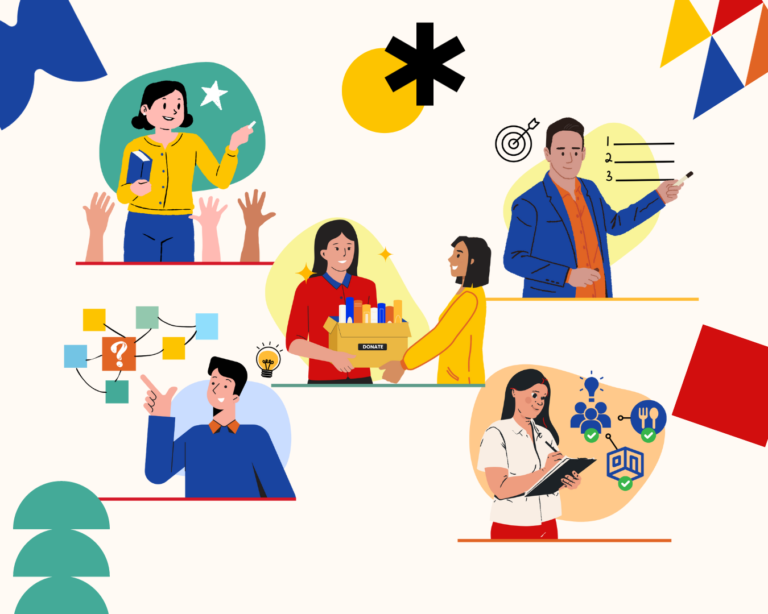Although mostly associated with fun and experimentation, Design Thinking can also be used by educators to tackle society’s more controversial issues inside the classroom. With what’s going on now–political tensions, war on drugs, terrorism– I am pushed to explore ways on how to arm our students with a proper understanding of our world. The dark times we face should empower us to teach beyond content and encourage our students to make things better; be aware yet stay optimistic. Let’s start contributing and sharing resources on how to teach these issues. I have a lesson idea on how to use the Empathy Map—a key tool in Design Thinking—to unpack one of the most important issues today: state-sponsored violence or also known as extrajudicial killings.
The Empathy Map, a graphic organizer that contains data about other people’s experiences, empowers our learners to take the first steps in research, and examine their findings before finding possible interventions. Filling up an Empathy Map is a personal endeavor, so it allows students to collect initial data without being intrusive, which is important when dealing with a sensitive topic such as EJK. Doing this activity also enables students to take an impartial stance as they momentarily forget themselves as students and enter another person’s shoes. It forces students to examine their assumptions about other people, by comparing their own perceptions with actual evidence.

Empathy Map. When studying a person/group of people, organize your information into the following spaces. Put yourself in their shoes. What are their actions and words? What is their everyday life like, according to their perspective? What could they be feeling and thinking about the issue?
The Lesson
- Present the Empathy Map to the learners. Fill one up as a whole class for practice. I suggest using a classmate or school leader (or even a prominent individual) as an example, just to familiarize with the tool.
- Pick a person to empathize with. Ask the learners to think of one person/group of people involved in the issue of extrajudicial killings and the war on drugs. If they need some scaffolding, here’s a list you can show:
- Families of victims
- Friends of victims
- General public who are supportive of the war on drugs
- General public who are critical of the war on drugs
- Police
- High-ranking police officials
- Politicians (National or Local)
- Journalists
- Bloggers
- Activists
- Drug users
- Individuals involved in the drug business
- Create Empathy Maps. Once they have picked a person/group of people, give them time to fill up an Empathy Map for that person.
- You can let them do this individually first, then group them afterwards to discuss and combine answers into larger Empathy Maps for each person.
- Another way to scaffold the activity is to have students bring news articles (facts) or social media page screenshots (opinions) as homework. They can use these resources as starting points or sources for filling up Empathy Maps.
- Facilitate discussions about the Empathy Maps. Some guide questions:
- How was the process of filling up the Empathy Maps?
- What do you notice about the Empathy Map of each person? Do they see, hear, say, do, think, and feel similar things? What are the differences?
- What were your initial assumptions about these people? How did the Empathy Maps support or change your assumptions?
- Which person do you empathize with easily? Which ones were hard to empathize with? Why do you think so?
- What were your sources of information when filling up the Empathy Maps? What else do you want to know about these people?
- How can we understand the recent events based on these Empathy Maps?
This lesson can transition to the following project ideas:
- Research / Social Studies:
Write research questions based on the gaps of information in the existing Empathy Maps. Use different research methodologies to investigate answers to those research questions. - English / Filipino / Media and Information Literacy:
Summary of articles available about extra-judicial killings and the war on drugs. What are journalists—both local and international—saying and reporting about the issue? - Math / Computer Science:
Gather quantitative data about extra-judicial killings and the drug war from reliable sources, and develop graphs and charts to teach them about data-driven storytelling.
Final Tips
- Be clear with the learning objectives. What is your goal for incorporating these issues in class: To situate the content in real-life situations? To provide a venue for students to discuss and debate varied opinions about the issue? To decide, as a class, on a collective position and actionable steps? Decide, and communicate to your class.
- Make sure you know your students. A deep understanding of their contexts and perspectives will inform you of how to approach these topics with sensitivity and design lessons accordingly.
- Don’t expect students to have the same intensity or position on these issues. Be prepared for some apathy or dissenting opinions, and how you will address such situations. I suggest doing a temperature check first to know where they are coming from: what their prior notions, feelings, and ideas are about the topic.
- Reinforce the safe space. Reassure students that their ideas and opinions are valued in the classroom, and are safe from unfair judgment. Agree on discussion and feedback norms.
Let us know how your lesson goes. Share your thoughts, ideas, and feedback. Let’s keep this going.


